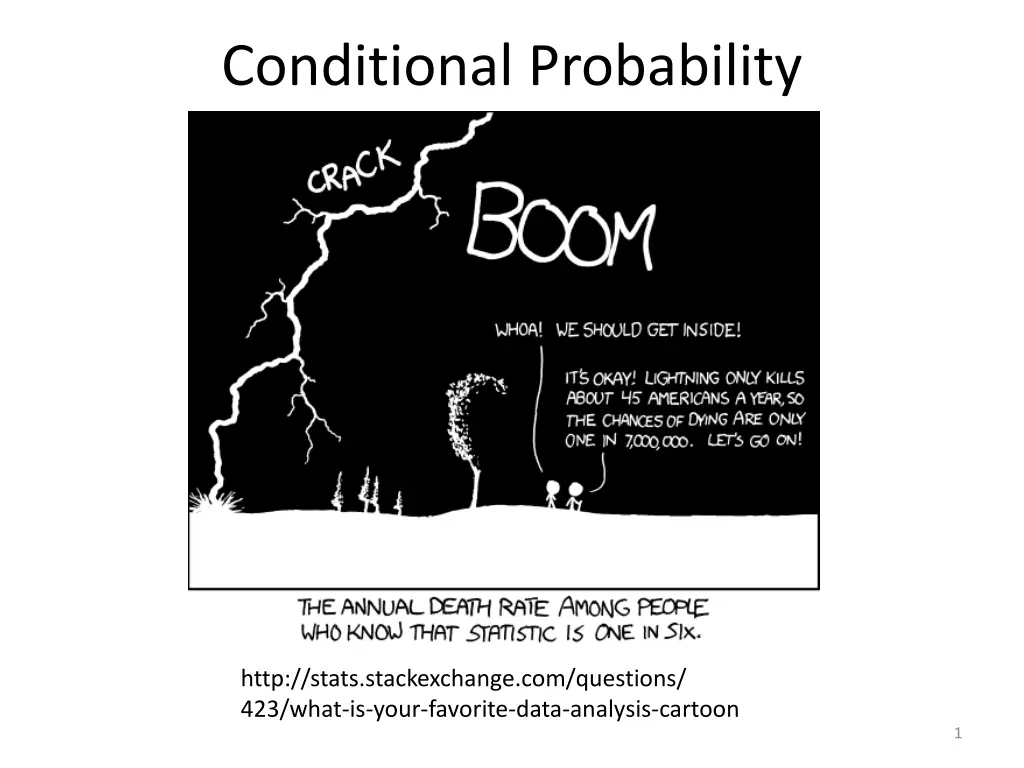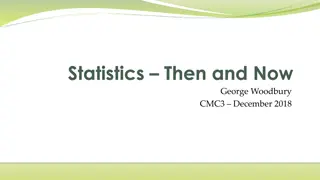
Understanding Conditional Probability, Independence, and Random Variables in Data Analysis
Explore the concepts of conditional probability, independence, and random variables in data analysis. Learn to calculate probabilities, apply rules and formulas, and differentiate between independence and disjoint events. Discover the significance of random variables and their probability distributions.
Uploaded on | 0 Views
Download Presentation

Please find below an Image/Link to download the presentation.
The content on the website is provided AS IS for your information and personal use only. It may not be sold, licensed, or shared on other websites without obtaining consent from the author. If you encounter any issues during the download, it is possible that the publisher has removed the file from their server.
You are allowed to download the files provided on this website for personal or commercial use, subject to the condition that they are used lawfully. All files are the property of their respective owners.
The content on the website is provided AS IS for your information and personal use only. It may not be sold, licensed, or shared on other websites without obtaining consent from the author.
E N D
Presentation Transcript
Conditional Probability http://stats.stackexchange.com/questions/ 423/what-is-your-favorite-data-analysis-cartoon 1
4.4/4.5: Conditional Probability and Independence - Goals Be able to calculate conditional probabilities. Apply the general multiplication rule. Use Bayes rule (or tree diagrams) to find probabilities. Determine if two events with positive probability are independent. Understand the difference between independence and disjoint. 2
Formulas Conditional Probability: ? ? ? =?(? ?) ?(?) General multiplication rule: P(A B) = P(A) P(B|A) Bayes Rule P B A P(A) P A B = P B A P A +P B A P(A ) 3
Law of Total Probability 5 4 1 6 3 B and 4 B and 6 B and 3 B and 7 2 7 B 4
Independence Two events are independent if knowing that one occurs does not change the probability that the other occurs. If A and B are independent: P(B|A) = P(B) P(A B) = P(A) P(B) 5
Disjoint vs. Independent In each situation, are the following two events a) disjoint and/or b) independent? 1) Draw 1 card from a deck A = card is a heart 2) Toss 2 coins A = Coin 1 is a head B = Coin 2 is a head 3) Roll two 4-sided dice. A = red die is 2 B = card is not a heart B = sum of the dice is 3 6
Chapter 5: Random Variables and Discrete Probability Distributions statistic cartoon http://www.landers.co.uk/statistics-cartoons/ 7
5.1-5.2: Random Variables - Goals Be able to define what a random variable is. Be able to differentiate between discrete and continuous random variables. Describe the probability distribution of a discrete random variable. Use the distribution and properties of a discrete random variable to calculate the probability of an event. 8
Random Variables A random variable is a function that assigns a unique numerical value to each outcome in a sample space. Random variables can be discrete or continuous. The probability distribution of a random variable gives its possible values and their probabilities. 9
Probability Distribution of a Random Variables Probability mass function (pmf) is the probability that a discrete random variable is equal to some specific value. In symbols, p(x) = P(X = x) Properties 1. 0 pi 1 2. ??(?) = 1 ? 10
Expected Value and Variance for Random Variables ? ? = ? = ??= ???? ? 2 Var X = ?2= ?? 2= (?? X)2 ?? = E X ?? = E(X2) (E(X))2 ??= ???(?) 11
Rules for Expected Value and Variance Means Rule 1: a+bX = a + b X Rule 2: X Y = X Y Rule 3: ? ? ? = ? ? ?(?) Variance Rule 1: 2a+bX = b2 2X Rule 2: If X and Y are independent random variables, then: 2X Y = 2X + 2Y Rule 3: If X and Y have correlation , then: 2X Y = 2X + 2Y 2 X Y 12






















